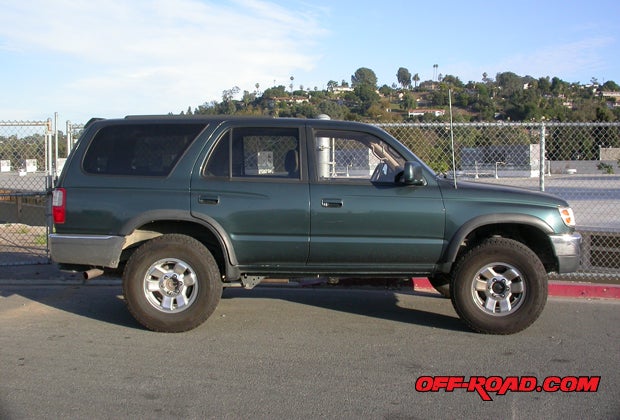 |
| The third generation 4Runner before our rear suspension work. |
We made it past the easy part with the front suspension, but now this little third-generation 4Runner project has moved into a murkier phase of the buildup: rear suspension. The Toyota Racing Development and Bilstein combination for the front-end was part of our plan early on; that setup has a following but also has a lot of contrary information about it. We had to try it out. The rear suspension, though, has been something of a mystery, as there are countless ways to do it.
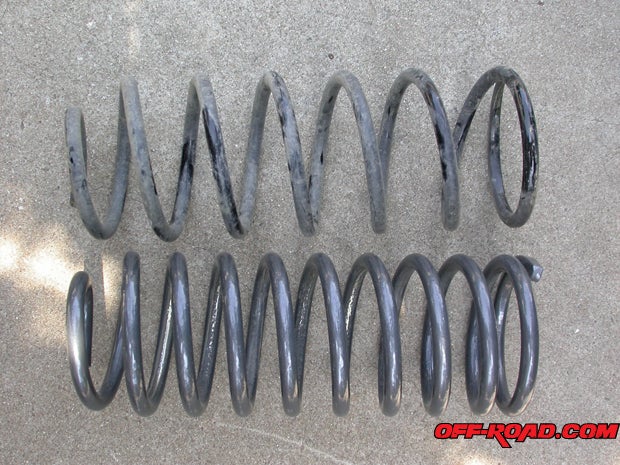 |
Stock spring out, Downy 2.5-inch in (bottom). Their near-equal height turned out a near-perfect indicator of the problem we’d have with the used Downeys (though this usually isn’t the case). |
Shocks Out? Sometimes You Must Hack
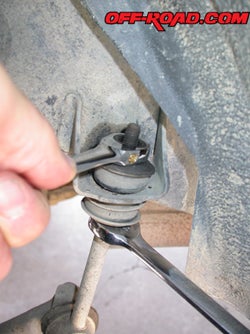 |
| Two combination wrenches and the drop-link for the rear ‘bar falls out. With a jack under the axle, this is a necessary cake step. |
Despite the vagaries of spring selection for the rear of the gen-three 4Runner, the process won’t vary much. Toughest amongst all the maneuvers beneath the 4Runner is getting the factory parts out – the OEM shocks, to be exact. The springs will practically fall out. The originals shocks, though, probably have a solid metal sleeve around the piston shaft (instead of the flexible rubber or plastic one you usually see) that renders access to the shaft a Sawzall kind’a proposition.
The shock is mounted valve-down, with the piston ends underneath the body, pocketed next to the frame and with about two ratchet clicks worth of access. It sucks. We gave it the old college try, and then the old pub try, followed by the case of Schlitz try, with sexy open-body ratchets borrowed from Big “E” and company at Big “O” La Mesa, plus air tools and extensions and all sorts of other neato devices, but even with our rust-free SoCal truck, the shaft and nylocish nut stubbornly turned in tandem. Hate it.
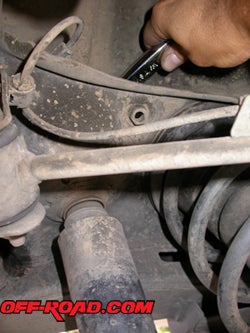 |
The impossible step, made easy – if you’re not going to reuse the shock, hack the rock cover, Vise-Grip the shaft and the ratcheting is no longer a problem. |
When we decided to throw mechanical decency and decorum out the window, we had a much easier time of it. Sawzall the shaft cover off (we used a DeWalt recip, technically), grab hold of the shaft with the biggest, ugliest Vise-Grip you own and a plain-Jane deep-well socket will do the job. Ratcheting combination wrenches will work too. You do not want to cut the shock body or shaft - just the thin metal sleeve. We then tossed the OEM pieces as far as possible.
Installation of the Bilsteins was deceptively easy (you can use a box wrench and an Allen key, and not too much torque is required), though you’ll want to pay close attention to Bilstein’s instructions on bushing placement.
The shock part of this wasn’t in question – we used a longer-throw Bilstein B461478. We chatted up the in-house guys over there for some hard numbers and picked up a shock that would provide about two more inches of travel. Hint hint – it’s used with another Toyota truck, a little bigger than the 4Runner, and is ideal for a lifted 4Runner. If you’re only planning to do a one- or two-inch lift, a stock-sized shock can be used (usually), but we expect to be hitting about three-plus inches of increased lift in the future, so we’re planning ahead with the correct shock. As stated, this is the evolution of a gen-three 4Runner, not the end-all.
PAGE 2
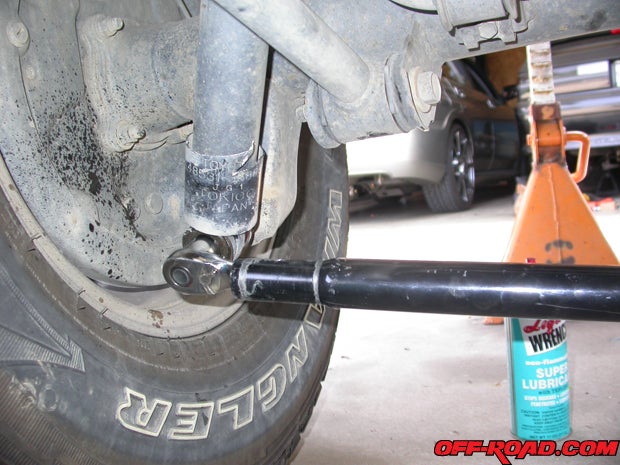 |
The lower shock mounts can be sticky, so don’t fear the jack handle. Leverage is a great thing and makes bulging veins and eyeballs obsolete. Note the section of rock cover we had cut off previously. |
Whatever the Spring, Install is Just Leverage
As for the springs back there, if you’ve never done springs on a solid-axle vehicle, you’re in for a treat. One of the tricks is to keep your jack convenient after the truck is on stands (we’ve been told by a dealer tech that stands under the OEM tow-bar are just fine, by the way) to manipulate the rear axle up and down. Undo a shock on one side with the jack under that corner of the axle, then droop it down until the factory spring falls out. Installation is the mirror repeat of removal, and if things are too tight, just have a buddy step on the drum, or disconnect the sway bar end-link on that side. You’ll have the cone-damper fall out with the spring, which we reused after trimming an inch out of it – the jury is still out if that was necessary at all. Our longer Bilsteins might render the mod moot. We’re still playing with that, but this is a cheap game – a set of junkyard cone-dampers can replace these if we trim too much.
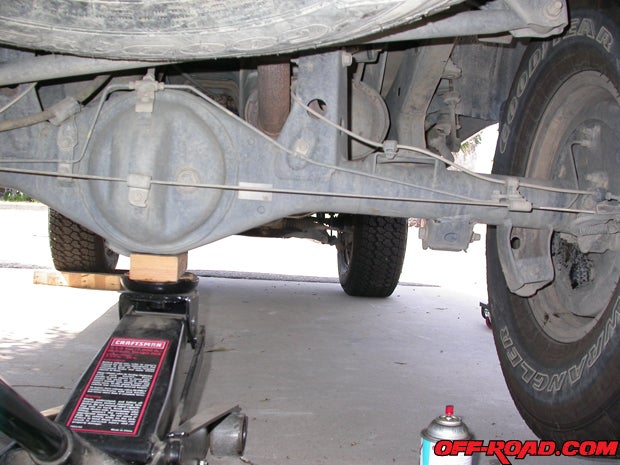 |
| As described, the jack beneath the axle will keep it from dropping, and will also protect the rather essential central brake line fitting attached to the top of the pumpkin. |
Spring Selection – A Few of the Many
We’d poured through the Web, searching information about what rear springs to use. There are dozens of combinations, some OEM-based, some aftermarket. We will explore this in the next installment of the 4Runner suspension series, which will take an overarching look at the conversation. Consensus started gelling around three springs, the Downey 2 1/2-inch coil and the Old Man Emu 890 or 891, both around two-inch uppers. The Land Cruiser JZ80 front springs that have come to be popular as of late are taller than we wanted to start out – we didn’t space the front suspension, so it went up a little less than two inches.
The Old Man Emu 890s offer about two inches, but they are reputed to settle over time. The 891s were supposed to offer a touch more lift, and more cargo capacity (the Aussies like month-long adventuring and need their cargo capacity, thus the anteater look you often see from ARB and OME stuff). There’s an OME 906 that registered less than two inches up and served as a light- to medium-capacity spring. Good hardware, but they all have a rep for being stiff.
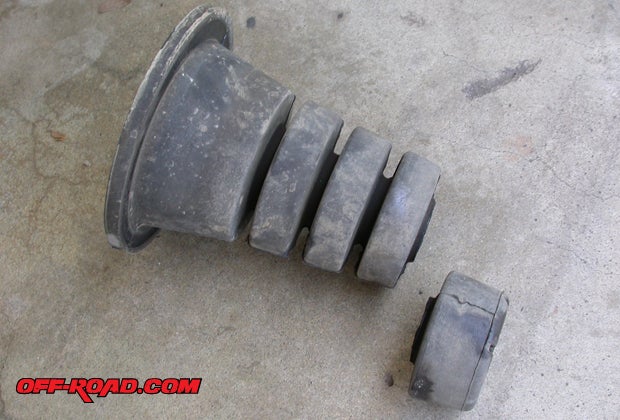 |
Before putting the springs back in, we trimmed an inch out of the cone-dampers. Might be worth it, might not, we’ll let you know. |
The other manufacturer that stuck with us was Downey, whose rear gen-three coils were reputed as being more compliant, offering improved range of movement. Downey had been manufacturing hardware for Toyotas in the dirt for years, and was reputed as a center of knowledge for well-designed mods. Note the ominous use of the past tense ... We found a set online at YotaTech (Downey was sold out) but once they were in, things started to smell funny.
PAGE 3
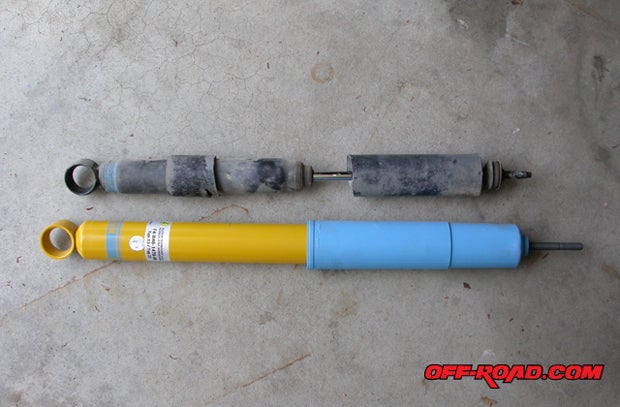 |
The Bilsteins, directly compared to the OEM shocks. The body is about an inch longer, with another inch of shaft. |
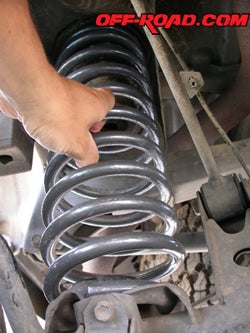 |
Slipping the spring into place was the true reverse of removal – you’ll want to make sure it’s aligned with the perch. |
By the way, after a month the front suspension has proven itself as super-effective. Controlled, stuffable, and with the adjustable Bilsteins under TRD Tundra coils, we have the option of two inches more height (the Bilsteins have a modular lower perch), or we can use a set of top-out spacers for the same effect without increasing the coil-neighboring. We’re running a Goodyear Wrangler Silent Armor all around, 265/75/16 (about a 31-inch), which works great aired down to the 22 to 25 psi range and isn’t obnoxious on the street. There is no contact in the wheel well, despite this Wrangler’s big shoulders. We could probably go up to a 275 or 285/80, and we’ve got a set of the new MT/Rs on the way to test just that.
Necessity of Functionality: Beware the Used Gear
With the Downeys installed, the rear suspension equation began to assume the odor of the harbor at low tide. What was supposed to be a two-inch improvement in suspension height barely registered an inch. We measured, and measured again, and compared photos before and after, and then talked it out with some suspension people who know more than we do. The springs were collapsing – sagging into the dreaded 4Runner ass-droop, but this time it’s on a lifted truck so the rear is practically at stock height. With time spent off-road (serious time in Colorado) and carrying a few hundred pounds to and from, the rear springs had collapsed to less than an inch lift, unloaded. This is important because articulation is ruined when the spring on one side or the other is nearly in bind at ride height. It can’t work, and even more lift with a spacer won’t solve the lack of travel in a sagged spring. The smushed spring also puts the longer-bodied Bilsteins in jeopardy, risking bottoming them out daily-driving, and on basic things like drainage gutters.
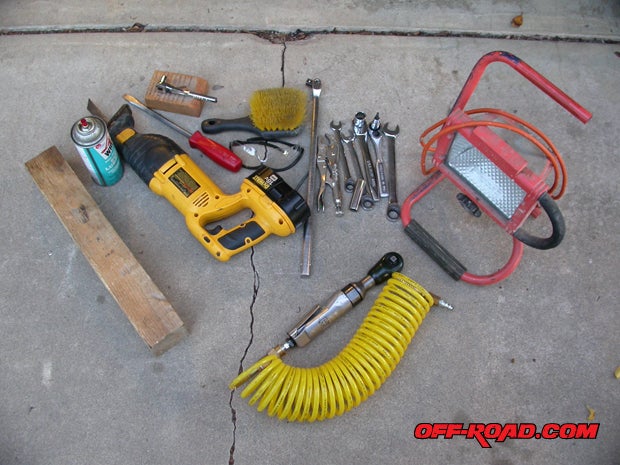 |
No special tools were needed for this action, and if you don’t own a recip-saw, you should. |
These were used springs, and we couldn’t check their providence or examine if they were actually a Tacoma spring that had been shipped to the first user by mistake. As if to add to the horror (Mr. Murphy loves a party), Downey Off-Road, long-time source of a myriad selection of killer Toyota hard parts, had closed its doors in the end of July 2009 (R.I.P. – we hear those pieces will be coming back through other retailers). There was no retail recourse. Damn! Tune in next month as we puzzle through the cleanup of rear suspension question that need answering.
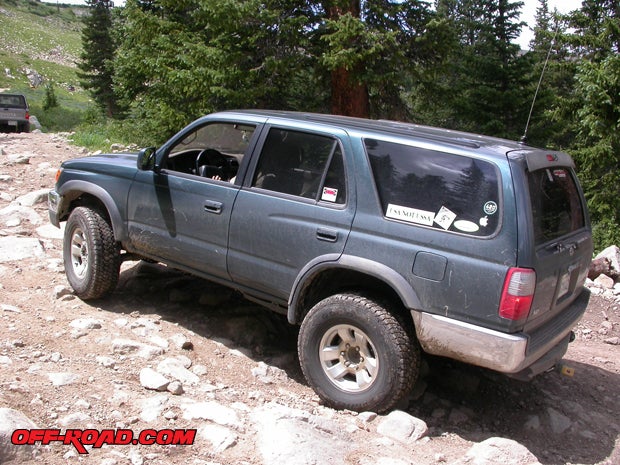 |
| Despite having added improved suspension pieces that offered two inches of lift on all four corners, only the front went up appreciably. We’ll revisit the rear. |


 Your Privacy Choices
Your Privacy Choices